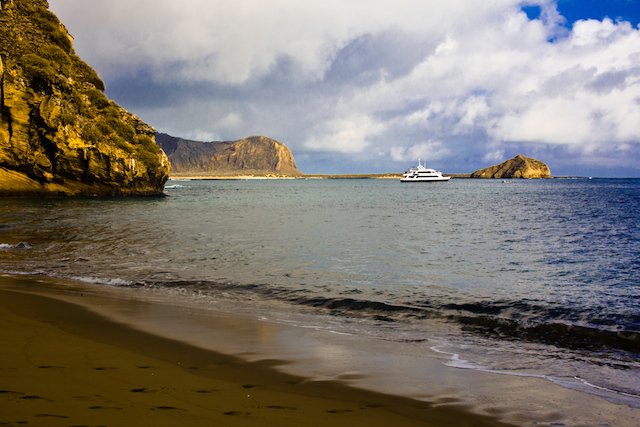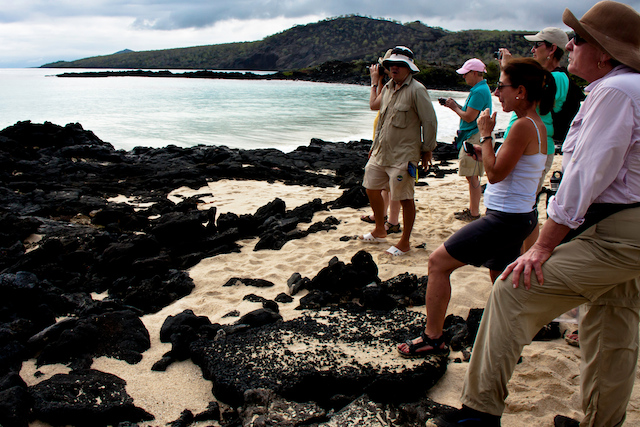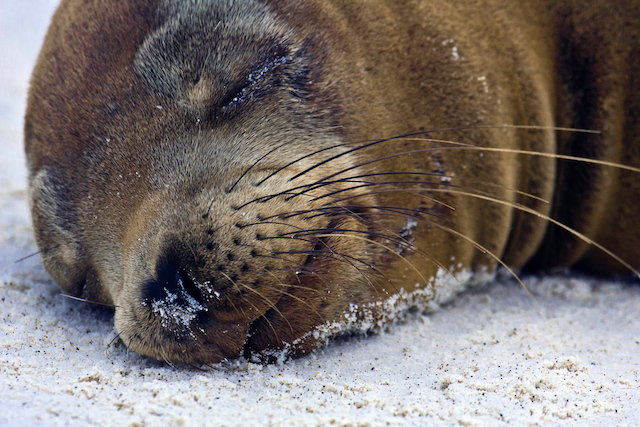“Take only pictures, Leave only your footprints”
Tourism vs. Sustainability in the Galapagos Islands
The Galapagos Islands is one of the most remote and exquisite ecosystems. These volcanic islands are home to unique plants and animals that aren’t found anywhere else in the world. The ability to keep these areas undisturbed is a delicate balance between tourism dollars and limited access.
Tourism in the Galapagos is working because it has been developed under a systematic program that regulates how many tourists are visiting each island daily. They rotate the islands that each tour is able to take you to, and change the trails on the island, so no one trail is overrun.
As a visitor to the islands you will always have a trained naturalist guide with you, and these guides mean business! Each guide goes through rigorous training that teaches them how to lead a group of people while educating them on the ecosystem and leaving the smallest footprint possible on the environment.
Research is continually being done on the animals and how their schedules and routines are affected by tourists being so close to their habitats. The Charles Darwin Research Station with assistance from other organizations have brought back animals from the brink of extinction. These groups are making huge leaps in understanding the endemic animals better and tracking their history and current habitats.
There are endless amounts of research and data you can read over while learning more about the balance of tourism and sustainability in the Galapagos Islands. If you are interested in going deeper please email us and we can help you direct you to more detailed information. Today we want you to leave with a basic understanding of what’s being done, and what you can do to get involved.

When you visit the protected areas of the Galapagos Islands you are asked to follow specific rules. The naturalist guides are there to help enforce these and keep the Galapagos as undisturbed and pristine as possible.
Galapagos National Park Rules:
-
To visit the National park you must always be accompanied by a certified Galapagos National park guide.
-
Galapagos is a unique and fragile environment. Take only photographs and video. Professional shooting needs authorization from the National Park.
-
Please stay within the limits of the walking trails, for your safety and that of the flora and fauna.
-
To avoid affecting the wildlife’s natural behavior please avoid getting closer than two meters to the animals.
-
Camping is only allowed in specific sites. If you wish to camp, you must first obtain a permit from the Galapagos National Park.
-
Help conservation by cooperating with the authorities in their inspection, monitoring and control duties. Report any anomalies to the National Park.
-
Do not introduce foreign organisms to the islands, as these can have a negative impact on the ecosystem.
-
Please do not buy souvenirs which are made from black coral, sea shells, sea lion teeth, tortoise shell, volcanic rock or endemic woods.
-
Galapagos animals have their own feeding behavior. Never feed the animals. Feeding them can be detrimental to their health.
-
Galapagos landscapes are beautiful and unique. Do not spoil them by writing or etching rocks or trees.
-
Do not litter while on the islands. Always dispose of rubbish in a safe and appropriate way.
-
Smoking or making campfires in the national park areas is forbidden and can cause devastating fires.
-
Fishing is strictly forbidden, except on those boats specifically authorised by the Galapagos National Park.
-
Jet skiing, submarines, water skiing, and aerial tourism are all forbidden

How is Ecoventura doing their part?
We’ve implemented a waste management system and garbage recycling program on all of our ships. Organic waste is compacted and discharged according to international regulations. We insist that our guests bring all of the packaging back with them and dispose of it on the mainland.
There are two types of towels we offer in each cabin, one for you to bring with you to the beach and one to keep in the cabin for showering. While we will change your towels daily, in order to conserve energy we only wash the towels that you place on the floor.
We supply you with biodegradable soap, shampoo and conditioner in your cabin and offer purified water made from our reverse osmosis water maker for guests to refill their water bottles to drink.
Majority of our food comes from local suppliers. This helps us limit the risk of bringing over any new species or contaminates from the mainland.
We were the first Hybrid yacht in the Galapagos, in addition to being the first company to earn and maintain the voluntary ecological certification, SmartVoyager since 2000. We reduced CO2 by 10% from 2006 – 2011 through the installation of solar panels and wind generators to the Eric.
Click here to see what else we have done to lessen the impact on the wildlife and be a pacesetter in responsible tourism in the Galapagos Islands.

What can you do?
-
Research the companies you travel with and make sure they are doing all they can to travel sustainably.
-
Get involved with environmental groups such as The Rainforest Alliance, World Wildlife Fund or Conservation International.
-
Use your towels on the ship for more than 1 – 2 days before requesting them to be cleaned.
-
Refill your water bottles from our containers of purified water.
-
Use our shampoo and conditioner that is offered in each cabin to help reduce your footprint while you visit.
What are other ways that you decrease your footprint and travel more sustainably?





